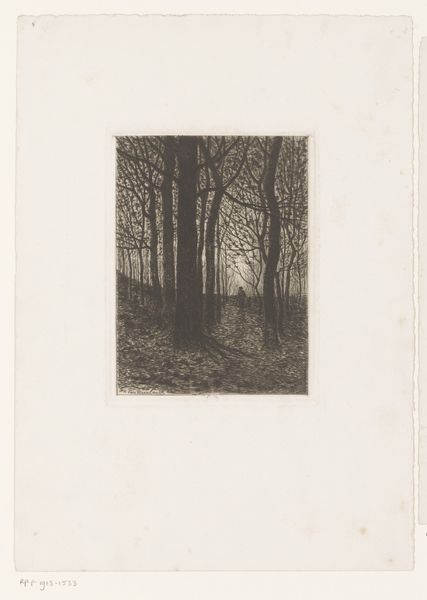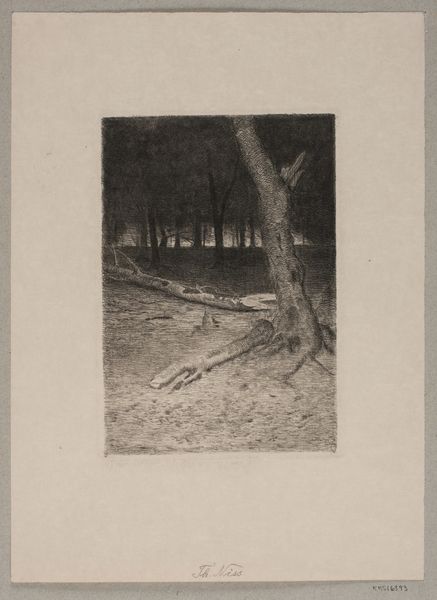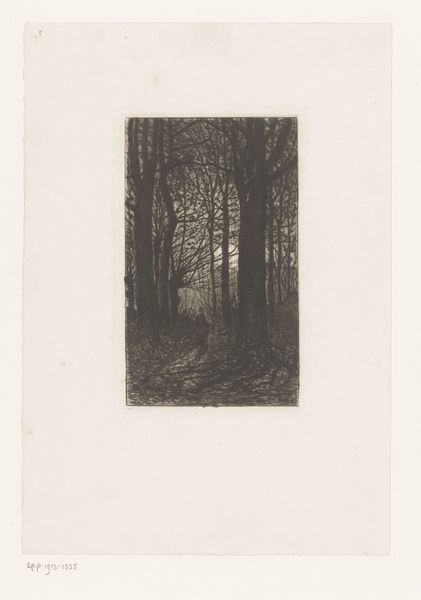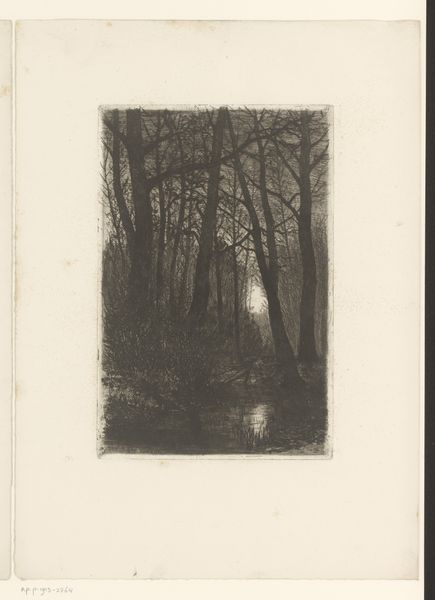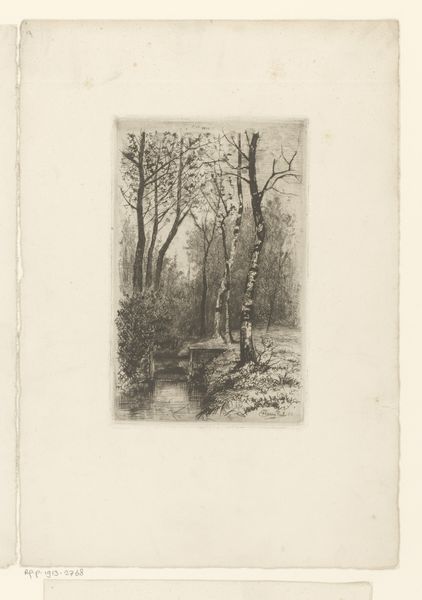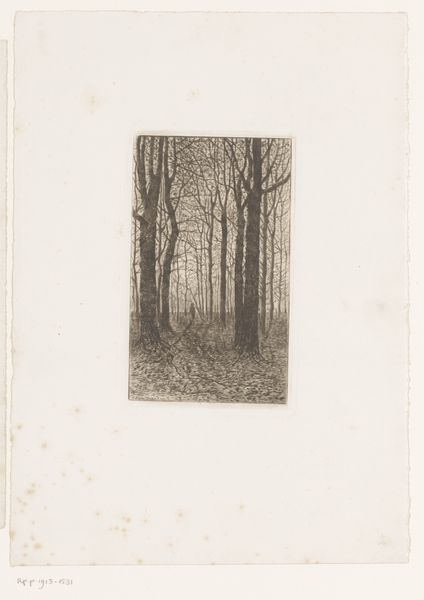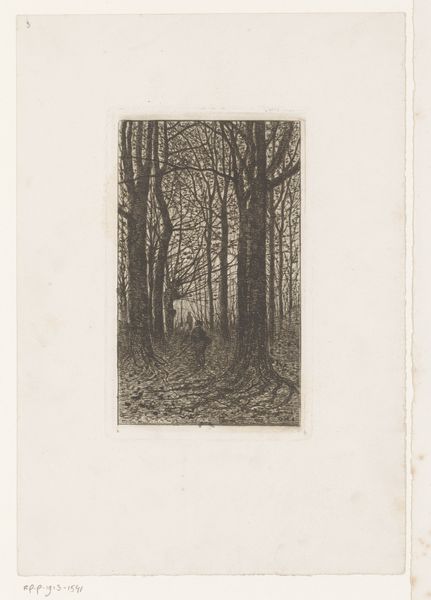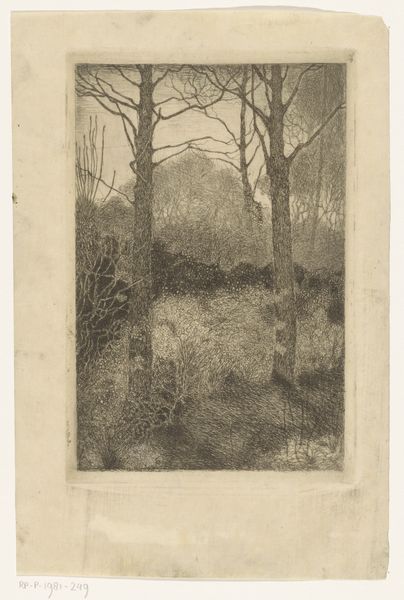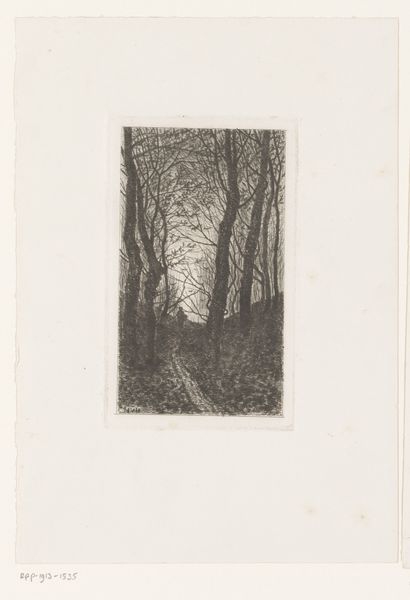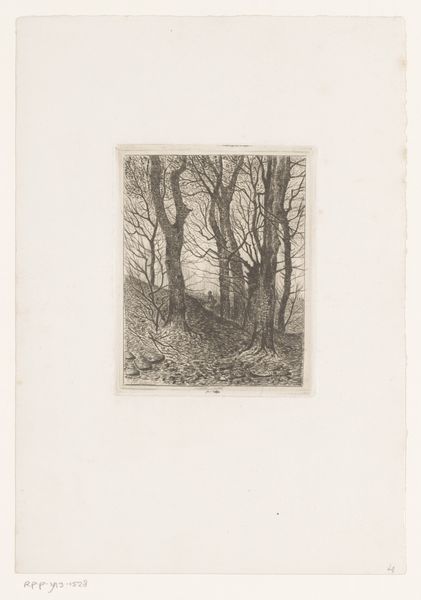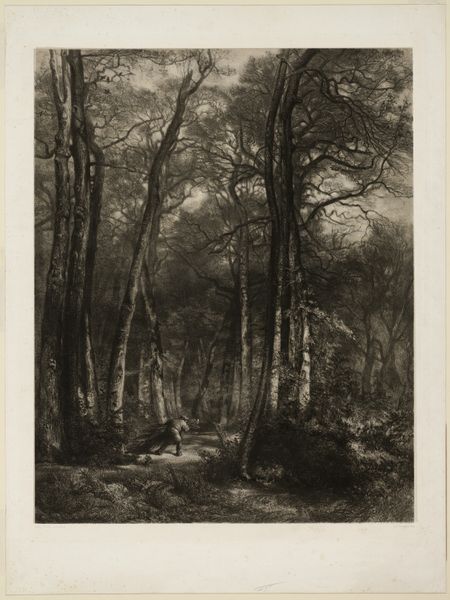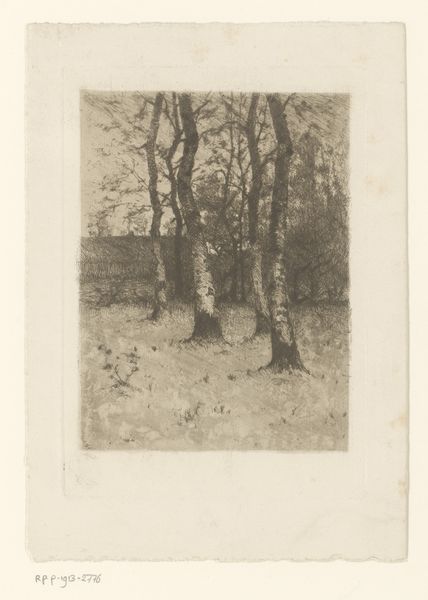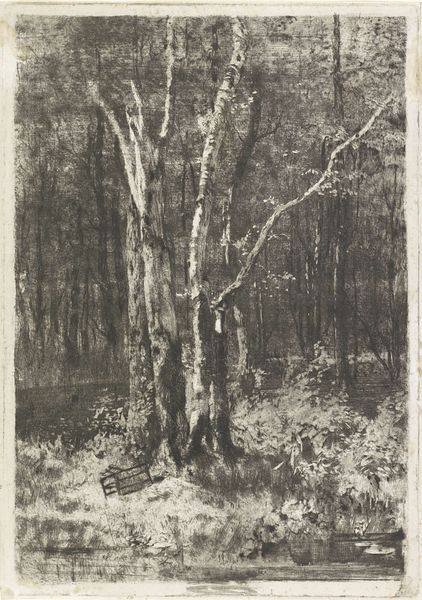
drawing, print, paper, charcoal, engraving
#
drawing
#
ink painting
# print
#
landscape
#
charcoal drawing
#
paper
#
charcoal
#
engraving
#
watercolor
Dimensions: 159 × 102 mm (image); 232 × 178 mm (sheet)
Copyright: Public Domain
Editor: Right, so this is Auguste-Louis Lepère's "Winter: Bas-Bréau," possibly from somewhere between 1887 and 1908. It looks like it’s a print, made with charcoal, engraving and ink on paper. The mood is, well, rather gloomy. It makes me wonder what life was like for people interacting with this landscape. How should we interpret that mood, from an art history perspective? Curator: An excellent question. To truly grasp the mood, let's consider the sociopolitical landscape in France at the time. Lepère was working in a period of significant social change and urbanization. How do you think this might have influenced his choice to depict this stark winter scene? Editor: Perhaps a contrast? The cities were booming, yet he chose to focus on the rural, almost desolate, environment. Was it a conscious commentary? Curator: Exactly! The late 19th century saw the rise of industrialization and a shift away from rural life. Images like this can be seen as a commentary on what was being lost. Artists began to engage with rural spaces, not always as idealized pastorals but sometimes with an undercurrent of elegy, as you aptly put it. Now, given this was likely created as a print, how might that context shape how it was seen? Editor: If it’s a print, then it was accessible to more people, meaning more could see and maybe consider what was being lost. That gives the artwork a role to play within society itself! I never thought about it that way. Curator: Precisely! The image's potential impact changes entirely once we remember this isn’t just about personal expression. Considering this opens so many doors for other prints too, doesn't it? Editor: Absolutely, it does. Thanks! I am already thinking differently now about art and its relationship to cultural forces and historical context.
Comments
No comments
Be the first to comment and join the conversation on the ultimate creative platform.
